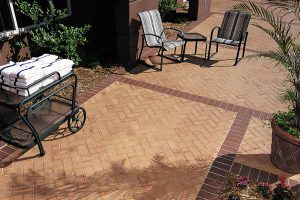Soil, Slope and Shape Makes For A Great New Home Lot
When it comes to choosing a lot to build a home, it can’t be just any old lot. In fact, homebuyers, their architects, and their builders analyze the potential lot to make sure it is right. As Acme Brick says, “What This Means for You — Finding the ‘perfect lot’ is probably impossible, given the many factors involved. However, finding a great lot that allows a builder to construct a sound foundation, take advantage of sunlight and views and reduce the impact of erosion caused by water is certainly possible with a little research.”
The Soil
This is the most basic element on the lot. The direct can be made of fine clays to coarse sands with gravel mixed in. You can get a pretty good idea of the soil type by examining a handful of soil taken from below the topsoil, the dark, organic matter that’s usually no more than 6 to 10 inches deep. You cannot see the individual particles in soils high in clay. When squeezed, this soil feels smooth and can be rolled into thin shapes. Granular soils with more silt, sand, and gravel have visible particles that feel grittier. They will not hold a shape when squeezed,” according to buildingadvisor.com.
Soil can be challenging as it can contain high clay content granular soils and solid ledge. High clay content is not one of the best soil contents to work with. ” “Soils with high clay content tend to hold a lot of water and drain poorly. Soft clays have limited load bearing ability, requiring foundation modifications. In cold climates, clay soils are prone to frost heaves, which can damage foundations, slabs, and piers that support decks and porches. Expansive clays expand when wet with enough force to destroy foundations and shrink when dry causing excessive settlement. Most non-expansive clay soils are fine to build on but will require more granular fill to be brought in for backfilling, reducing problems with drainage and frost heaves. Expansive clays require expensive engineered foundations,” according to buildingadvisor.com.
Granular soils are ideal for building and drainage because of the sand content. Solid ledge is the worst because you have to pay to have it blasted. Sites with solid or fractured ledge near the surface present problems with excavation, drainage, and septic systems. Blasting is expensive and carries liability if a neighbor claims that your blasting cracked their foundation. When possible, it is much less costly to leave the ledge in place and work around it,” advises buildingadvisor.com.
The Slope
It is just a myth that a nice flat lot is the best lot to build a home on. “A flat lot doesn’t always equal a perfect piece of land. There are problems that may come with that simple, smooth surface to curb potential flooding. Even with the best drainage systems, there is still the potential for water damage if your home is sitting at the lowest point in the neighborhood,” notes buildingadvisor.com.
There are three types of slopes, side slop, up slope and down slope. Building on a slope will allow you to build a basement.
The Shape
The shape of a lot can impact the design of the house. “Two lots with the same square footage may not both be buildable despite having the same area. A long narrow lot will not be as usable as one that is square. The shape of the lot impacts where the home is situated and the size of front, side, and rear yards. Homes on cul-de-sacs (pie-shaped lots) may have setback requirements (the distance the home is from the street) that allow for side yards but also mandate longer driveways,” comments buildingadvisor.com.
If you are in the market for a new lot, make sure to also consider the direction the house will face, the zoning and building plans, the proximity to schools and shopping and how much traffic will go by the home. This is an exciting time, but you will need to also work with professionals who can help you along the way.
